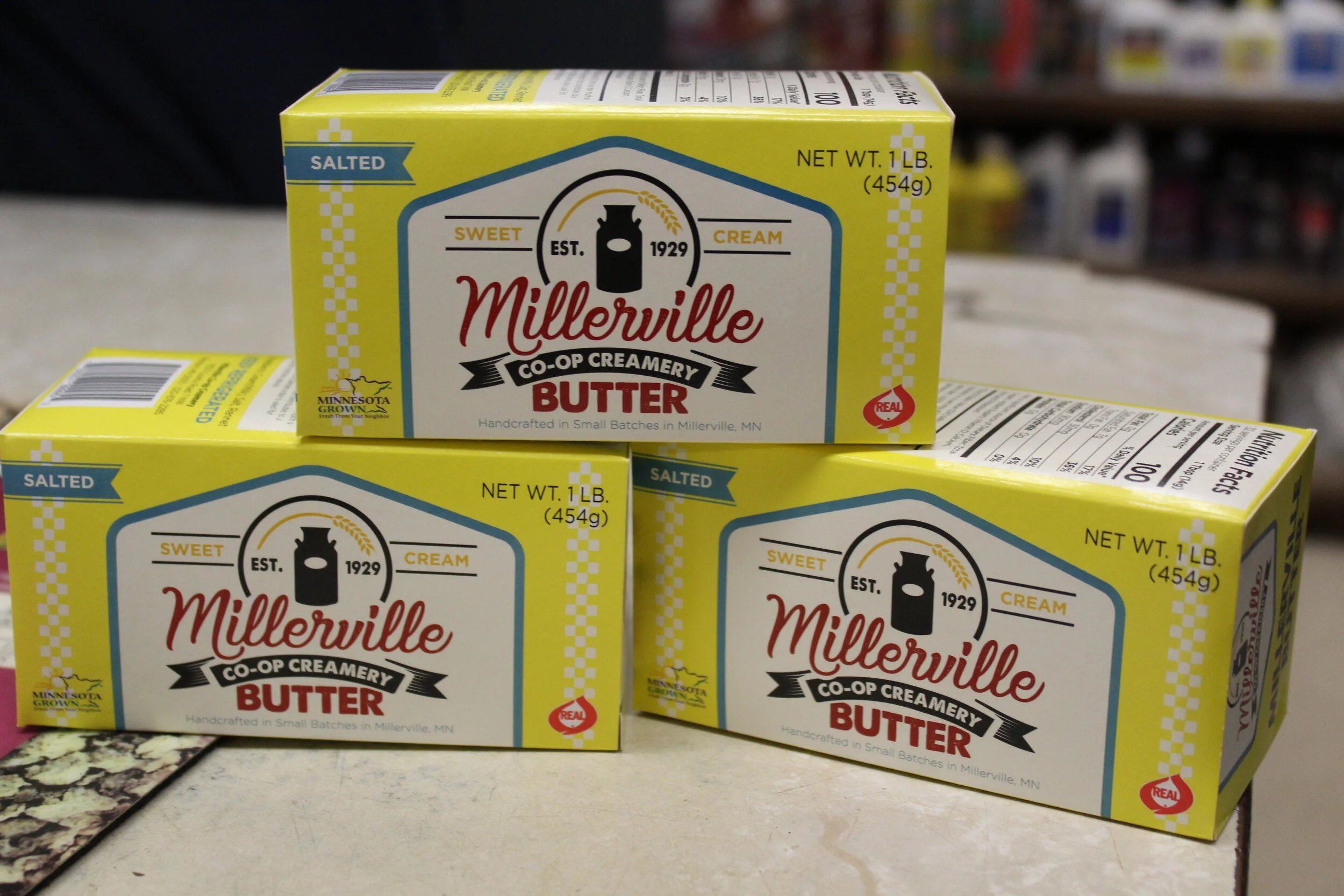Nothin' is better than Millerville Co-op Creamery Butter!
There’s nothing better than butter - especially when it’s from the Millerville Co-op Creamery!
What makes it so special?
“Ours has a richer flavor,” says Deidre Hubbard, Millerville Co-op Creamery’s general manager. “People swear by it for cooking and baking.”
And it was super on my lefse, too!
The secret to it’s super creaminess is the butter process itself which takes three days.Milk is brought in a large tote from the Melrose Land O’Lakes plant, is put a pasteurizer and cooled overnight, then it’s churned to a popcorn-like consistency. The milky liquid, or buttermilk, is drained then salt is added to the butter. It’s mixed until smooth, said Hubbard.
Deidre Hubbard and Mark Thoennes welcome you to Millerville Co-op Creamery and invite you to try the creamery’s great butter.
A “Friday box” is the butter’s next step. The Friday Box is actually a metal container. One box will hold up to 100 pounds of butter.
The Friday boxes are placed in a cooler where it firms overnight. The next day it’s cut, wrapped and packaged.
Deidre’s husband, Eric, is chief butter maker and Kurt Mateer is his assistant. Also helping in the co-op is Mark Thoennes who’s worked at the cooperative since the late 1970s.
The Millerville Co-op Creamery got its start in 1929 when more than 100 dairy farmers formed the cooperative. Many separated milk on their farms. As it went through the separator, it emptied out of two spouts, one for cream and the other, skim milk. Farmers brought the cream to Millerville where it was made into butter.
At its height, the creamery made two batches of butter a day to fulfill government subsidies, Deidre said. Today they make a batch or 1,100 pounds of butter, every two to three weeks. The butter is wrapped and packaged in one pound cartons and is salted, Hubbard said . It can be purchased at the Millerville Co-op Creamery and at a number of stores in central Minnesota.
While the butter is always popular, there are two times of the year when sales are particularly brisk - summer and the Christmas and New Years holidays. During the summer, tourists will often take hundreds of pounds of butter to bring home with them, Hubbard said.
And, during Christmas, bakers love it in cookies and Christmas treats.
The Millerville Co-op Creamery is a farm supply store and offers agronomy services to area farmers. It also sells butter and a wide variety of spices.
Millerville Co-op Creamery has 81 co-op members. Not all are active farmers, Hubbard said. IT is one of the last remaining creameries in Minnesota to produce hand crafted, small batch butter.
Help support local cooperatives by buying a pound of the best butter you’ll ever eat!
Check out their Facebook page at facebook.com/millervillecoopcreamery or the Minnesota Grown directory.







